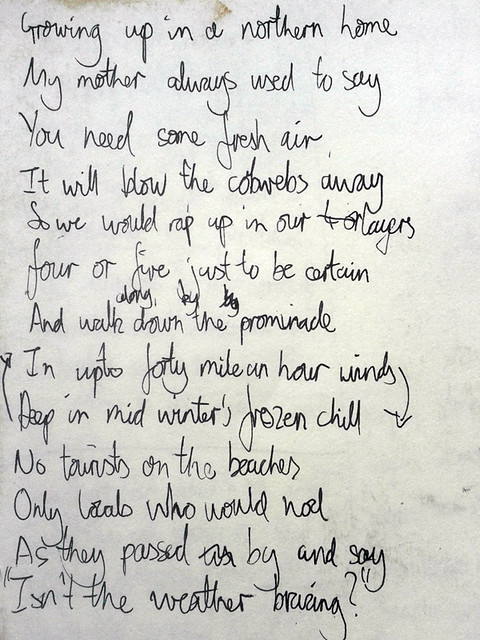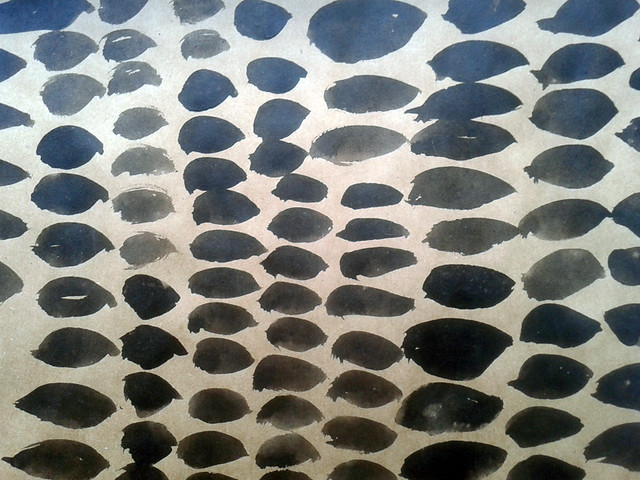9 ways to use a sketchbook

I really believe everyone should have and use a sketchbook, I don’t mean an expensive sketchbook like a Moleskine where you are afraid to crease a page. More like the Seawhite of Brighton starter sketchbook, the paper quality is nice but they aren’t too expensive and can be quicker to fill to give you a sense of accomplishment. This sort of cheaper sketchbook should be a good all rounder with pen, pencils or watercolours.
There is no need to be afraid of making a mistake; a sketchbook is a working document. You don’t need to share it with anyone so you can relax in knowing that these are only for your eyes. Regardless of not sharing with anyone, mistakes are how we learn and get better at drawing and writing and the first stage is recognising where we are going wrong.
Sketchbooks are for everyone, not just people identifying themselves as designers, makers and artists. I love my sketchbook it is the best chance I have to explore on a day to day basis, and really I need to utilize it more like many other creative people.
So here are 9 ways I use my sketchbook:
- Colour

Though I may take a picture with my phone when I go places, the colours are never as vibrant as they are in person, and often find them lacking what drew me to taking the picture in the first place. Generally when I go out and about I try and carry a small pocket sized watercolour set and a water brush. I know I don’t have time for a whole painting so I mix up the colours and apply them in a grid.
It just gives me a few moments of mindfulness, in the place that I am in, whether it is in the woods or by the beach trying to capture the colours I see helps me remember those times and places.
- Note taking

For me this has been the biggest use of a sketchbook this year I have filled several sketchbooks for my master’s degree between notes from the seminars, interviews with potters and the observations I have carried out.
I tried sketch notes some time ago, there is a brilliant book about creating sketch notes but it takes too long to do in the moment. I don’t have time to go over notes and turn them into anything more visual than what is here.
- Forms

I don’t drive, so I am either a passenger in the car or I take a lot of Public Transport. On my undergraduate course I used to take the bus and it was an hour in each direction, and I needed to stay awake so I used to sketch. I liked to sketch with themes, so one day I would do chimney pots another day gates, and another distant skeleton trees.
This led on to the backs of cars and then as I travelled less to boats as I sat on the beach with my children as they built sandcastles and played in the sand. But I enjoyed just drawing simple forms with as few lines as possible, as it kept my hand and my mind active over short bursts.
- Learning

I am really forgetful ask any of my close friends and they will tell you my memory is weird. So I like to make detailed notes on everything I learn, whether that is a processes or a piece of pottery. Writing down what I have learnt helps me cement that learning, and engaging the hand and writing are better for absorbing the information.
For me writing what I have learnt also gives me something physical to go back to that I can re-read, I also tend to put drawings with my notes to help give visual prompts, like a drawing version of a mnemonic
- Design

I take a simple approach to initial drawings when I design; I want my lines to be quick as I am searching for forms I like. To do this I try to make sure no thumbnail sketch takes more than 20-30 seconds, using an economy of line, trying not to lift my pen off the paper if possible. Selected forms are then redrawn playing with proportion, before one is selected and measurements calculated for throwing the form.
During throwing things will change and it will take time to learn that particular form, but it all starts as a doodle on a page.
- Dreaming

I use sketchbooks to record my dream projects, the things I want to be part of one day but don’t have time for right now. Also places I want to go and people I want to meet, I am not sure how some of it will happen, but these are pie in the sky ideas. From here I can go back at some point in the future, and develop a plan of action when I need a distraction from a project that isn’t going too well or need some head space I look here.
I think it is good to dream what seems impossible because at some point to a future self it may actually be possible. It also helps me identify what I want to do rather than just what I am doing right now.
- Drawing from Life

Drawing from life doesn’t mean “life drawing” going and sketching nudes, but sitting in a place and drawing what is in front of me. Taking time to accurately create what is in front of me and perhaps measuring the components of a drawing with my pen, to note the key distances.
I used to use this to relax, to go out places and do a sketch. With two children and a degree in progress; drawing from life on location has had to go on the backburner. I still try and get in an odd sketch from time to time and take note of the world. I want to use more drawing from life in my ceramic work eventually.
- Writing

Blog posts often start as a few paragraphs in a sketchbook; I even have unpublished blogs articles for the last 2 years which have never been typed up or used. As things get typed they evolve and change, generally I will then print and try and edit them on paper again before they are published, because each stage distances me from the last.
I also write poetry, usually when I am anxious as it helps me focus my attention on the here and now. So I have to pay attention to the words in front of me rather than the world around me. Poetry is another thing everyone should try alongside using sketchbooks and live streaming.
- Mark Making

The first exercises we did in art school were all about mark making, whether it was learning how to consistently put a texture on a cube or working on the quality of our lines in our drawings. Other exercises included taking a line for a walk, where we would do continuous line drawings until our hands cramped up and had to stop. These early exercises were there to teach us the basics of drawing without ever trying to create a masterpiece.
Now I use mark making because I want to transfer it to my ceramic work, so I practice making the same marks over and over. I have filled many pages in sketchbooks just making quick marks with a brush and ink.
In Conclusion there are more than few ways here you can try out get yourself a clean new sketchbook and work through it cover to cover no two pages have to be the same. Work in the sketchbook daily, one day write one day draw, and make it an essential utility in your life.



One Comment